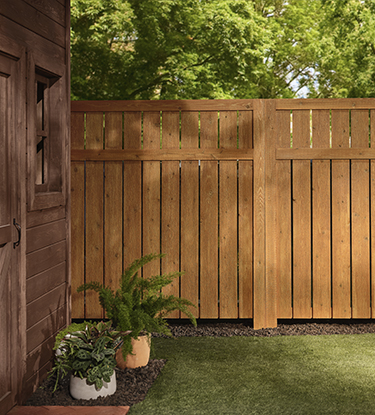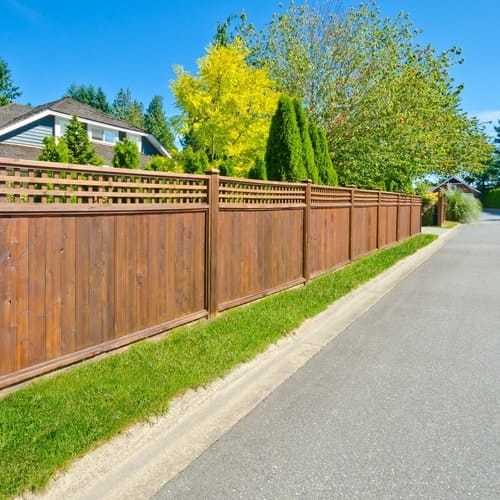How to Select the Right Fencing Discoloration for Your Home
When it involves enhancing the appearance and resilience of your home's fence, choosing the ideal stain is a vital choice that requires cautious consideration. With a myriad of options available in the market, each dealing with different timber kinds, colors, and transparency levels, the procedure can rapidly come to be frustrating. Nonetheless, making an educated choice can substantially affect the overall appearances and durability of your fencing. So, how can you make sure that you pick the best fence tarnish that lines up with your residential or commercial property's style and maintenance needs? Let's discover some vital aspects to assist you in this decision-making procedure.
Comprehending Timber Types
To choose the appropriate fencing tarnish, it is vital to have a comprehensive understanding of the various types of wood generally utilized for secure fencing. The option of wood plays a critical duty in determining the durability and overall appearances of the fencing. Cedar is a preferred choice because of its natural resistance to degeneration and pests, making it a sturdy option for exterior structures. Pine is another common wood utilized in secure fencing, recognized for its affordability and simplicity of staining. However, want is a lot more prone to warping and decaying compared to cedar. Redwood is a premium choice recognized for its striking look and all-natural durability, though it comes with a higher rate tag. When selecting a fencing stain, it is necessary to consider the type of wood being made use of to make sure compatibility and ideal protection. Recognizing the qualities of different timber types will assist you make a notified choice when it concerns selecting the best fence stain for your building - Nashville Fence Staining Services.
Choosing the Right Shade
Choosing an appropriate hue for your fence tarnish is an important choice that substantially affects the overall visual charm of your residential property. Lighter colors such as whites or light grays can make a fence appear bigger and add a touch of elegance to your building. Ultimately, the best shade choice will certainly enhance the beauty of your fencing and elevate the total curb charm of your home.

Considering Openness Levels
When selecting the ideal shade for your fence tarnish, an additional important aspect to take into consideration is the degree of openness that will certainly finest match your property's visual and upkeep needs. Transparency degrees in fence discolorations typically fall right into three categories: transparent, semi-transparent, and solid. Transparent discolorations enable the natural beauty of the wood to reveal through while supplying very little defense versus the components. They are suitable for brand-new or well-maintained fencings where showcasing the wood grain is a top priority. Semi-transparent stains supply an equilibrium in between color improvement and defense, enabling some timber grain to be visible while giving modest securing from UV rays and moisture. Solid discolorations, on the various other hand, supply the most protection as they entirely cover the timber with a nontransparent finish. These are suitable for older fences or those seeking significant defense or color change. Think about the level of direct exposure your fencing encounters, the wanted maintenance frequency, and the visual you wish to attain when selecting the appropriate transparency level for your fence discolor.
Assessing Upkeep Demands
Considering the long life and maintenance of your fence, reviewing the maintenance demands is important in identifying the most appropriate fence tarnish for your home. The degree of maintenance required for your fence can differ depending on elements such as the kind of wood, weather in your area, and your personal preferences.
When examining maintenance needs, it is important to think about the sturdiness of the fence tarnish. Some spots require even more constant reapplication than others, so picking a discolor with a longer life-span can help in reducing the overall upkeep needs of your fence (Fence Staining). Furthermore, aspects such as resistance to UV rays, water, and mold can influence just how often you need to re-stain your fencing

Testing Examples Prior To Application
Prior to using any fence stain, it is recommended to perform example examinations to make certain compatibility with the timber and preferred visual result. Testing samples permits you to examine just how the tarnish will communicate with the certain kind of timber utilized in your fencing, as different woods can soak up discolorations in different ways. To start, pick a small inconspicuous area of the fencing to use the discolor examples.
Conclusion
In final thought, selecting the appropriate fencing discolor for your residential property includes recognizing the wood type, choosing the right color, considering openness levels, reviewing upkeep needs, and testing samples prior to application (Fence Staining). By taking these factors right into factor to consider, you can make certain that your fencing discolor complements your home while giving the required security and longevity. Make an educated decision to improve the look and durability of your fencing